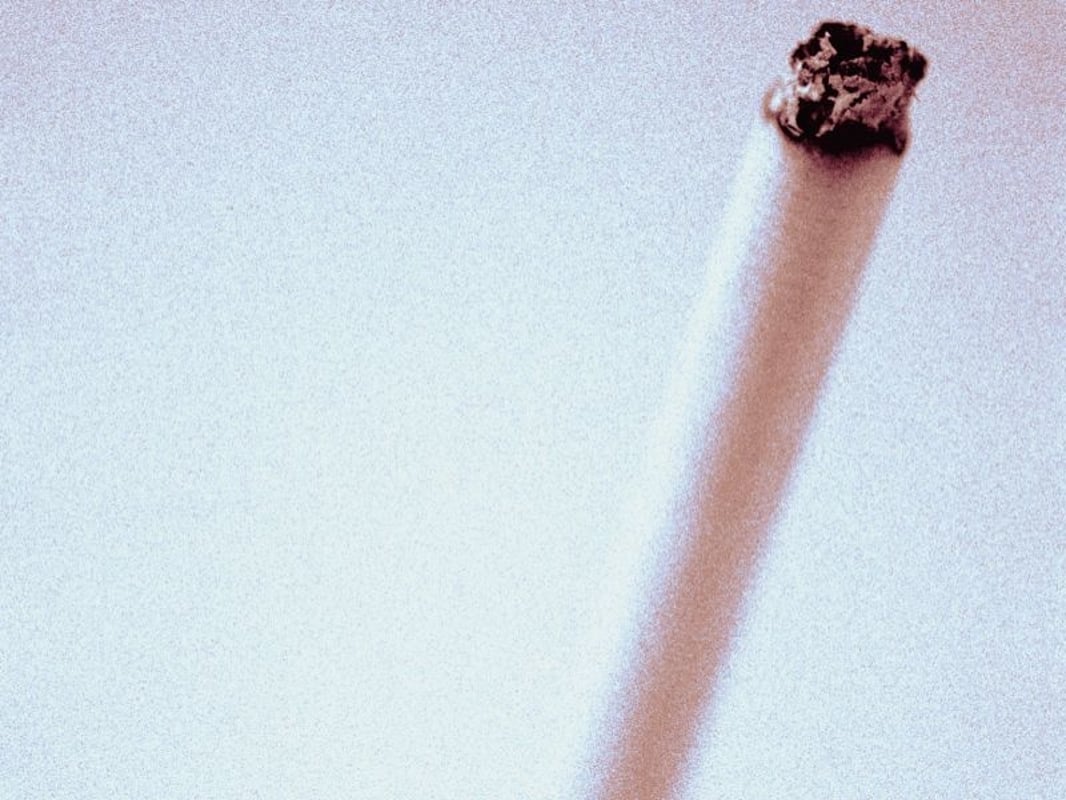‘Brain Zap’ Technology May Help Hardcore Smokers Quit

WEDNESDAY, April 27, 2022 (HealthDay News) -- Smoking is said by some to be the hardest addiction to break, and certain people might benefit from brain stimulation to quit, French researchers suggest.
Smokers who received noninvasive brain stimulation -- using low-intensity electric or magnetic impulses -- were twice as likely to go without cigarettes over three to six months as those who received sham brain stimulation, according to a new study review from researchers at the University Hospital of Dijon. Their work pooled data from seven previously published studies that included nearly 700 patients.
"This paper recognizes that the basis where the addiction of tobacco dependence comes from is the most primitive parts of the brain," said Dr. Panagis Galiatsatos, a volunteer medical spokesman for the American Lung Association, and director of the Tobacco Treatment Clinic at Johns Hopkins Medicine in Baltimore. He wasn't involved in the study.
Noninvasive brain stimulation has generated a lot of interest lately, with studies looking at it to treat a range of issues from pain and depression to substance abuse and tobacco dependence. But little is known about the duration of benefits for smokers after they quit, lead researcher Dr. Benjamin Petit and colleagues noted in the April 25 issue of Addiction.
While acknowledging this study was "modest" in size, Petit said, "the results appear to be robust and we feel confident in suggesting that noninvasive brain stimulation is a technique of interest for both short-term and sustained smoking cessation."
Several other studies are underway, Petit said. "In the near future, noninvasive brain stimulation might be recognized as a promising new option for assisting individuals who wish to stop smoking," he said in a journal news release.
Currently, smokers have an array of options to help them quit, including nicotine patches, counseling, hypnosis and addiction medicines. Sometimes, none of these are a permanent fix.
"Introduction of nicotine, especially at a young age, rewires the brain to have these conditional responses to it," said Galiatsatos. This is why nicotine addiction is extremely hard to quit, he explained.
Unlike taking alcohol or drugs, smoking can be done almost anywhere, Galiatsatos said. "To me, it is the hardest addiction to break, because it is constantly a reminder in people's everyday lives," he noted.
Two commonly used forms of noninvasive brain stimulation are transcranial direct current stimulation and transcranial magnetic stimulation. This review included both.
Transcranial direct current stimulation sends a low-intensity direct current through the brain, using electrodes placed on the patient’s head. This weak current affects brain activity.
In transcranial magnetic stimulation, a metal coil is put on the patient’s scalp. According to the authors, the coil generates magnetic pulses that induce electric currents in brain tissue. Depending on the frequency of the pulses, activity in the targeted area is increased or decreased.
Galiatsatos doesn't believe that noninvasive brain stimulation is for every smoker.
"It's got some merits for probably the most refractory cases, especially if they're supplemented with a really strong need to stop," he said. "I'm thinking of my patient who had his third heart attack, is a two-pack-a-day smoker, and he just struggles to stop."
But before Galiatsatos can give this treatment his blessing, he would like to know how long the benefit lasts and how many patients relapse.
"In my clinic, the majority of patients get triggered from some emotional disturbance they've learned to cope with by the [anti-anxiety] effects of nicotine," he said. "So what I'm curious about is, what's the relapse rate? Why do patients relapse? And once they do, does it just undo the stimulation?"
Galiatsatos believes smoking should be looked at like any disease and treated like any addiction. It's not a matter of desire and willpower, he said, but rather learning how to cope with cravings and manage the day-to-day desire to light up.
"Patients need a lot of things to align in their lives to feel like they can do it," Galiatsatos said. "Patients relapse because no one taught them how to appropriately manage their cravings during the times where cigarettes are their stress response."
Nicotine replacement drugs and behavioral counseling can help people reduce the need for nicotine and learn what triggers their cravings and how to cope, Galiatsatos said.
"Pharmacotherapy can help to curb those cravings, but it's behavioral modification [that's essential] -- the key is mindfulness," he added.
More information
For more on quitting smoking, see the American Lung Association.
SOURCES: Panagis Galiatsatos, MD, volunteer medical spokesman, American Lung Association, and director, Tobacco Treatment Clinic, Johns Hopkins Medicine, Baltimore; Addiction, study and news release, April 25, 2022
Related Posts
Healthy Dining Is Healthy for the Planet, Too
MONDAY, Nov. 14, 2022 (HealthDay News) -- Plant-based diets can be better for...
Women Still Underrepresented in Many Clinical Trials
THURSDAY, June 23, 2022 (HealthDay News) -- To ensure that all kinds of patients...
Thinking of Donating a Kidney? New Data Shows It’s Safe
FRIDAY, April 29, 2022 (HealthDay News) -- If you're thinking about donating a...
